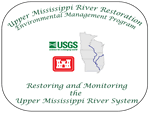Upper Midwest Environmental Sciences Center
 The Long Term Resource Monitoring Program
The Long Term Resource Monitoring Program
An element of the Environmental Management ProgramFisheries
Fisheries Database Browser
![]()
Fish data from the Long Term Resource Monitoring Program (LTRMP) are available through two database browser tools:
- Fisheries Database Browser, which provides the most complete access to raw data using the widest variety of query parameters. (below Query Fisheries Data)
- The Graphical Fish Database Browser, which provides summaries of the data as graphs and tables by species, gear, and location is available at http://umesc.usgs.gov/data_library/fisheries/graphical/fish_front.html
For fish component information, read the Fish Sampling Component Information Page that contains a description, history, and value ranges of the data.
Queries made using the Fisheries Database Browser are real time, it may take a few minutes to retrieve your results.
Query Fisheries Data
Page Contact Information: Contacting the Upper Midwest Environmental Sciences Center
Page Last Modified: September 1, 2010



